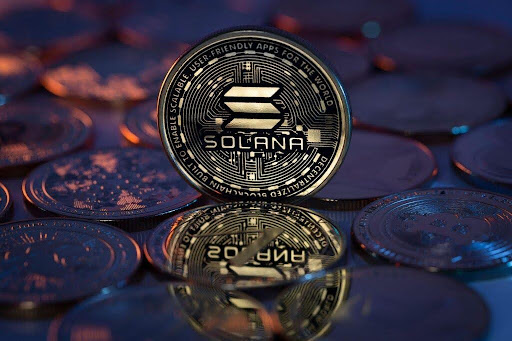Investors in Solana (SOL) are witnessing a reason for optimism today as the cryptocurrency has seen a 6% increase in value, overcoming the effects of a significant network disruption that occurred just two days prior.
This positive movement is part of a larger bullish trend across the cryptocurrency market, with Bitcoin, the flagship digital currency, experiencing a 4% rise in the last 24 hours.
For those invested in Solana, this recovery marks a critical moment of relief following an extensive period of operational stability that was interrupted by a recent system downtime. This was the first major interruption the network faced in nearly a year.
SOL price climb
Solana’s price has jumped from $95.35 to a present figure of $101.3 on Gate.io, indicating a robust recovery. This is further supported by Solana’s breaking through the 10-day exponential moving average (EMA10), an event often viewed positively by investors. Earlier in the week, SOL’s value dipped to a weekly low of $93 but has since reached a high of $102.
Since January 23, when Solana was trading at $78, the currency has been on a bullish trend. It has surpassed both the 55-day average price and the 10-day average price, indicating a strong rebound.
Currently, the price is hovering around the $100 mark, a significant psychological barrier that it is striving to exceed. Market indicators suggest that bullish momentum is present, though not overwhelmingly dominant.
Financial analysts and crypto experts are optimistic about Solana’s future. Arthur Hayes, a notable personality in the crypto world, has expressed enthusiasm for Solana, encouraging investment in the blockchain. This optimism follows Solana’s recovery from a downturn triggered by the downfall of FTX. Sam Bankman-Fried, FTX’s founder and a former advocate for Solana, had been instrumental in promoting the blockchain within the crypto community.
The overall cryptocurrency market is also witnessing growth, with the total market capitalization rising over 3% to $1.79 trillion. A return to the $2 trillion mark would represent the highest level since April 2022.
Solana and Cardano are leading the gains among the top ten cryptocurrencies by market capitalization, with Cardano surging 11.5% to $0.534 and Solana increasing by 7.4% to $101.82. Additionally, the launch of the DYM token, distributed to SOL holders through an airdrop, has seen a remarkable 26% increase in value since its introduction, nearly doubling its initial price as per CoinGecko’s reports.
Why did Solana crash?
The Solana blockchain was on the verge of celebrating a year free from significant disruptions, an achievement that has remained elusive due to its rapid growth. Unfortunately, this goal will have to wait another year after the network experienced a downtime lasting nearly five hours on Tuesday morning, as reported by the official Solana Status tracker. This incident came after a previous disruption on February 25, 2023, which lasted almost 19 hours and was attributed to a software issue that led to an overload of data transmission, as explained by the Solana Foundation.
The specific cause of the latest downtime has not been officially determined. However, discussions among Solana’s community have pointed to a known bug that was identified and fixed on the testnet but had not yet been applied to the mainnet. This situation underscores a development philosophy within the Solana community that values the safety and security of the network over maintaining uninterrupted service. This approach has been echoed by Solana co-founder Anatoly Yakovenko and other key figures in the Solana ecosystem, who have expressed their commitment to prioritizing long-term network integrity.
Solana’s occasional outages have become a notable aspect of its story, drawing criticism from some who question its ability to compete with Ethereum and other significant blockchains. Nevertheless, Solana continues to attract a growing number of traders and developers, drawn by its low-cost, high-speed transactions.
Despite the frustration outages cause, Yakovenko and others within Solana have openly acknowledged the possibility of future disruptions as they continue to enhance the network’s stability and security. This candidness is part of a broader belief in the necessity of rapidly improving these systems to prepare for the future of cryptocurrency.
A significant development in Solana’s strategy to increase its resilience is the introduction of Firedancer, a second validator client designed to operate alongside the existing one developed by Solana Labs. Announced in August 2022, Firedancer aims to enhance the network’s performance, decentralization, and reliability by offering an alternative in case of issues with the primary validator. However, the transition to Firedancer is not expected to be an immediate fix to all of Solana’s challenges. Yakovenko has indicated that validators are likely to run both clients to ensure the network’s safety, even if it means halting operations to prevent discrepancies.
While Firedancer’s rollout may encounter initial obstacles, the hope is that it will significantly contribute to the network’s overall reliability as Solana continues to grow. This reflects a broader understanding that software development involves a learning curve, with the potential for unforeseen issues that can be addressed over time to enhance system stability.


